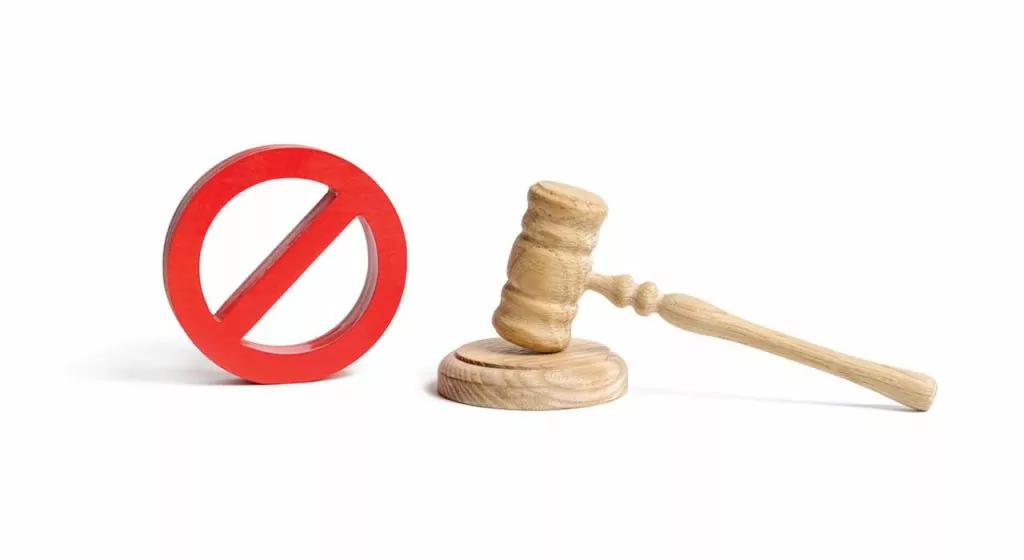Many Christians are puzzled by the decline of religious freedom in our country. Time after time, in conflicts involving homosexuals or abortion rights activists, Christians seem to lose. For example, we’ve seen people who voice opposition to special status for gays being harassed by “human rights” commissions. And recently we’ve also seen university pro-life groups being prohibited or severely restricted. Why aren’t Christians’ religious freedom or freedom of expression protected in these cases?
After all, the Canadian Charter of Rights and Freedoms guarantees both of these freedoms — religion and free expression. So when Christians lose out, it’s because our Charter freedoms are being ignored, right?
Well, maybe not. What if the Charter was adopted as part of a strategy to fundamentally change Canada? What if the framers of the Charter saw the historically Christian basis of Canada as an obstacle to be removed? If this were the case, then favoritism towards the opponents of Christian views would be a natural consequence.
Not a conspiracy theory
Now, at first glance that might sound like a conspiracy theory or something — a secret cabal plotting to shift Canada’s historic foundation. But by definition a conspiracy occurs in secret, and this was never a secret. Some of the Charter’s early proponents supported it because they wanted to make significant changes to Canada, and they said so openly. It wasn’t secret, so it wasn’t a conspiracy.
Until 1982 Canadians had enjoyed considerable rights and freedoms under the traditional British system of common law. Certain rights and liberties were recognized by the courts despite their lack of explicit mention in the constitution. This British method was strongly influenced by a Christian worldview because Britain had been an explicitly Christian nation for hundreds of years. (Queen Elizabeth, for example, swore in her 1953 coronation oath to “maintain in the United Kingdom the Protestant Reformed Religion established by law.”)
Thus to reject this system was to reject the special place that Christianity had in undergirding Canadians’ historic rights and freedoms. With Christianity’s privileged position gone, the Christian perspective just became one among many views, and one that was clearly out-of-favor with Canada’s elites.
A sudden secular shift
Most people who supported the entrenchment of the Charter in the early 1980s simply thought that human rights should receive constitutional protection, and the Charter was a way of doing that. There’s nothing sinister about this idea since it makes perfect sense. Don’t you want your rights constitutionally protected? Of course, we all do. That’s why the Charter was widely popular at the time of its drafting, and it’s probably even more popular now. Christians commonly cite the Charter in defending their own positions.
But what most people didn’t understand was that the worldview underlying the Charter was an alien thing. The changes that have been wrought in Canadian society as a result of court decisions (and political decisions) based on the Charter are the natural consequence of that document. Conservatives like to blame judicial activism for these changes but that’s not fair to the judges. The judges are basing their decisions on the intent of the Charter. Now, they do so happily, because they support the Charter’s secular humanist worldview, but they are truly following its original intent rather than making it up as they go.
After the Charter was adopted in 1982, the provincial and federal governments had to immediately review all of their legislation to bring it into conformity with the Charter. Before any judicial decisions were made on the basis of the Charter, a major change in Canadian law began to occur to prepare for its effect.
“A revolution in Canadian society”
When testifying to a parliamentary committee in 1985, federal Justice Minister John Crosbie made it perfectly clear that the adoption of the Charter was no ordinary kind of change — Canada was being fundamentally altered, and Canadians didn’t yet know what was about to hit them:
“The public does not realize that we already have had a revolution in Canadian society. The adoption of a charter was a revolution. It has changed the whole power structure of Canadian society.”
As the head of the Department of Justice, Crosbie knew better than anyone the wholesale legal change that was about to engulf Canada. This was before any court decisions had been made, so it is clear that the judges are not to blame. They are only implementing the agenda given to them by the Charter itself.
Fundamental change was always the point
Of course, Crosbie isn’t the only one to realize the revolutionary character of the Charter. Various left-wing activists and academics celebrate the Charter’s overturning of the Old Canada. University of Toronto law professor Lorraine Weinrib is one such academic. In her 2003 article entitled “The Canadian Charter’s Transformative Aspirations,” she summarizes the matter this way:
“The Charter’s purpose and desired effect, from the point of view of those who supported it was to transform the Canadian constitutional order in fundamental ways, not to codify existing constitutional values and institutional roles.”
The Charter was not adopted to protect the rights and freedoms that Canadians enjoyed up to 1982, but rather to make Canada into a different kind of country — “transform the Canadian constitutional order in fundamental ways” — as she puts it.
Weinrib describes the Charter as being part of a “remedial agenda.” That agenda includes the expectation that:
“…through extensive institutional transformation the Charter would impose a new normative framework upon legislators, the executive and the administration, as well as the judiciary.”
That may look like a bunch of egghead gibberish, but the main point is the imposition of “a new normative framework.” The “norms” of Canadian society would henceforth be different from before.
New is not always improved
In this view, Canada was an awful place before 1982. Weinrib says that “the Charter took Canada away from a repudiated history that had failed to respect liberty, equality and fairness.” But now people like Weinrib are freely remaking Canada into a wonderful new country, using the Charter to uproot the oppressive, crypto-fascist state that existed before 1982. That’s how they see it, anyway.
The truth is, however, that before 1982 Canada was one of the freest and fairest countries in the history of the world. Few other nations had records that could rightly be compared to Canada’s humane achievements. Millions of people came here to escape the problems of their homelands.
But in order to complete the Charter’s revolution, Canadian history must be rewritten into a narrative of oppression. This will help shore up support for the Charter while its “remedial agenda” is enacted throughout society.
So if you’re wondering why religious freedom and freedom of expression for Christians seem to be shrinking in Canada, consider how the country has changed since 1982. If you think your Charter rights are being denied, think again. The Charter is accomplishing just what it was set out to do — make Canada into a different kind of country. And it’s not a coincidence that Christianity is being left behind. The adoption of the Charter in 1982 represented a deep philosophical change in the nature of our country.
Originally published in the January 2011 issue under the title “Charting a path to tyranny? Canada’s Charter of Rights and Freedoms was always meant to be revolutionary.”












